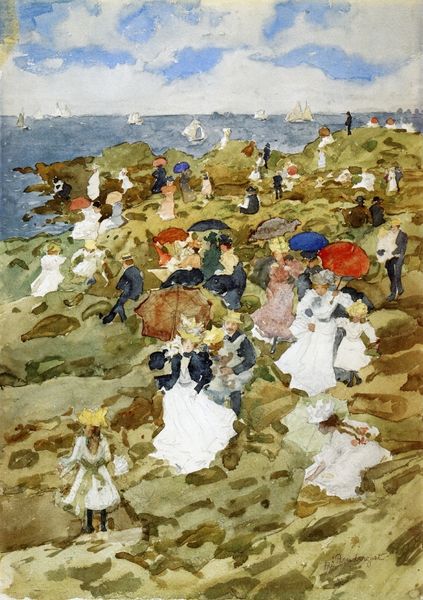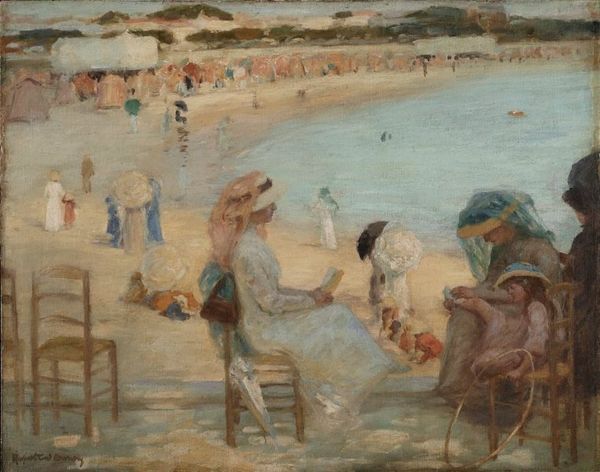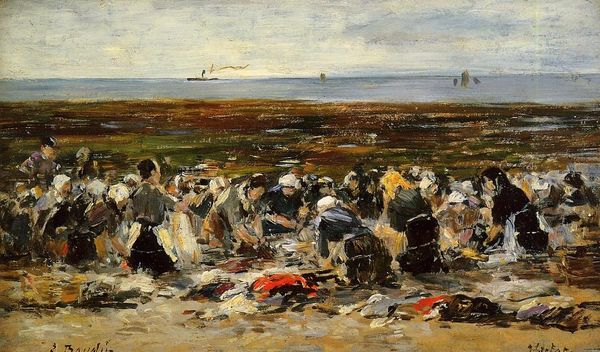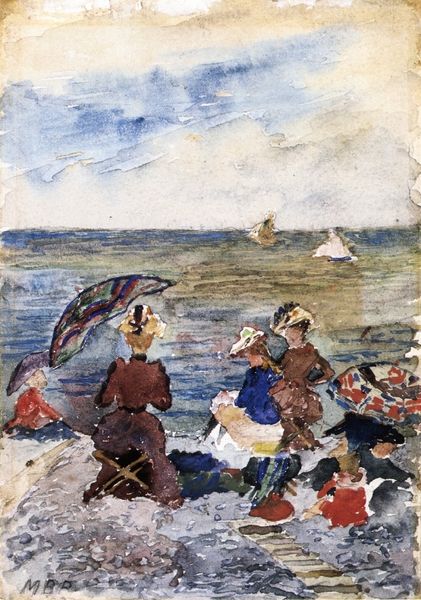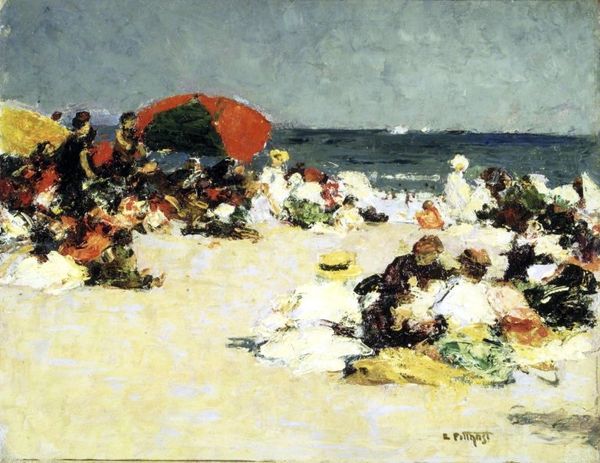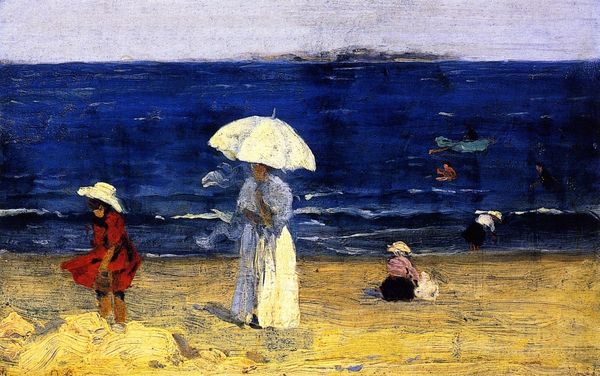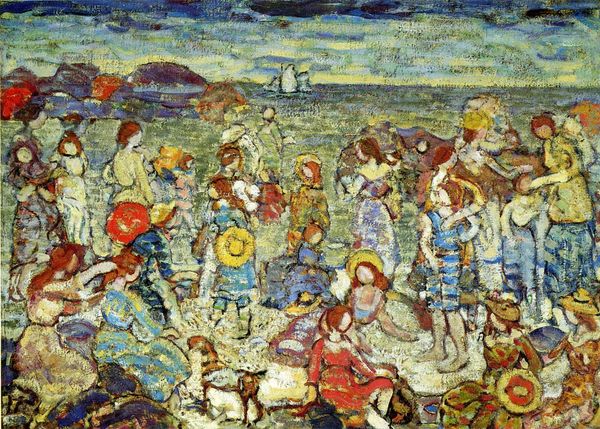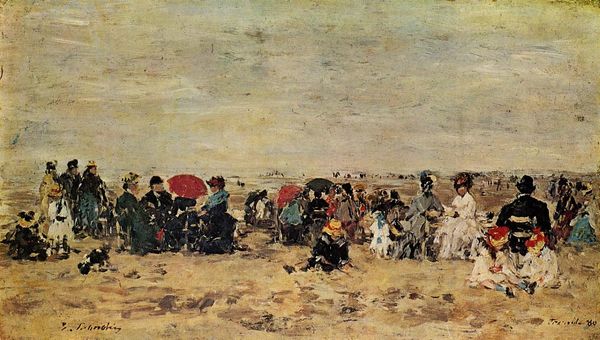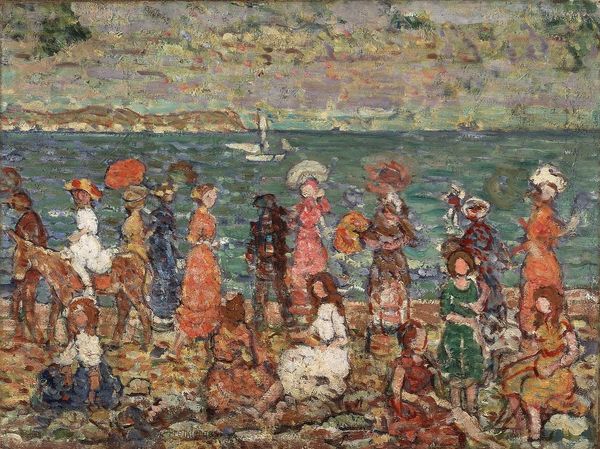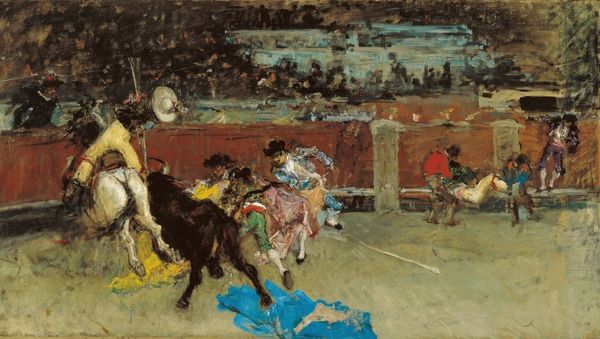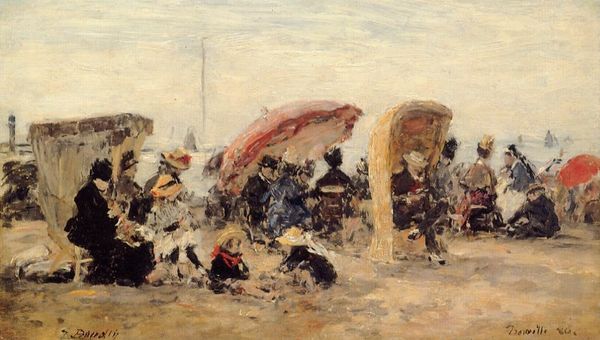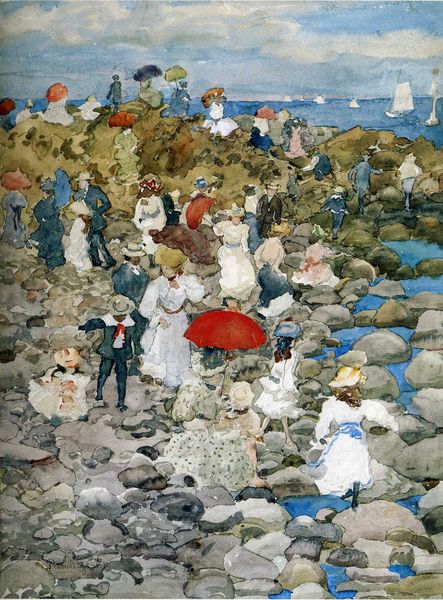
Dimensions: support: 610 x 765 mm frame: 910 x 1058 x 74 mm
Copyright: CC-BY-NC-ND 4.0 DEED, Photo: Tate
Curator: Philip Wilson Steer's "Boulogne Sands," currently housed in the Tate Collections, presents a bustling scene, a slice of seaside life. Editor: Immediately striking is the use of color and light. The painting’s surface has a vibrant, almost shimmering quality, with thick brushstrokes rendering the figures and landscape in a mosaic of blues, reds, and sandy hues. Curator: The painting encapsulates late 19th-century leisure, reflecting the growing accessibility of seaside resorts for the middle classes and a shift in social norms towards more public recreation. It seems to celebrate the freedoms afforded by these spaces. Editor: Yes, but also consider how the composition emphasizes a dynamic interplay of forms: the sweeping curve of the shoreline, the rhythmic repetition of bathing huts, and the clustering of figures around a central sandcastle. Steer explores formal relationships rather than narrative depth. Curator: And yet the lack of clear narrative is itself telling. The ambiguous relationships between the figures invite speculation about social dynamics and the transient nature of these interactions. It is a document of public life. Editor: Precisely. The formal organization of pictorial elements in a flattened perspective serves to underscore the painting's status as a constructed image, not merely a mirror to reality. The materiality of paint is foregrounded. Curator: It leaves me thinking about how public spaces shape us. Editor: I'm more focused on the dialogue Steer creates between the viewer and the painted surface.
Comments
Join the conversation
Join millions of artists and users on Artera today and experience the ultimate creative platform.
tate 7 months ago
⋮
In the early 1880s Steer studied in Paris, where he encountered the work of the French impressionists. After his return to England in 1884, he painted a series of luminous and brightly coloured coastal views which relate to Monet’s paintings of the same period. The loose brushwork and sparkling colours brilliantly capture the transience and exhilaration of childhood and summer vacations. His use of strongly contrasting colours draws on theories being promoted by the most avant-garde painters in France at this time. Gallery label, November 2016
